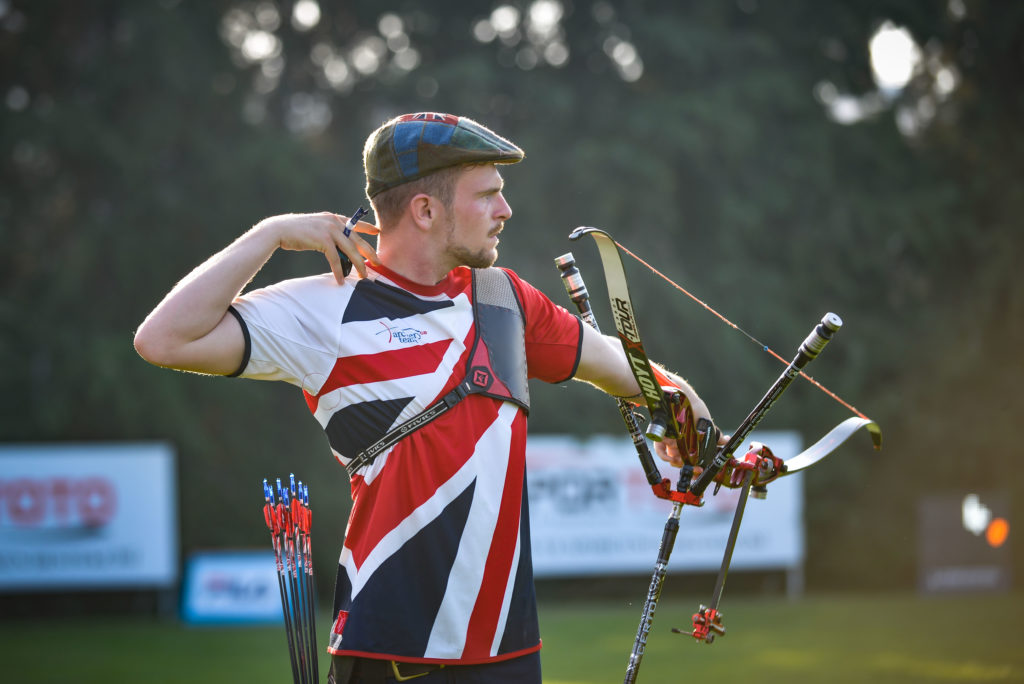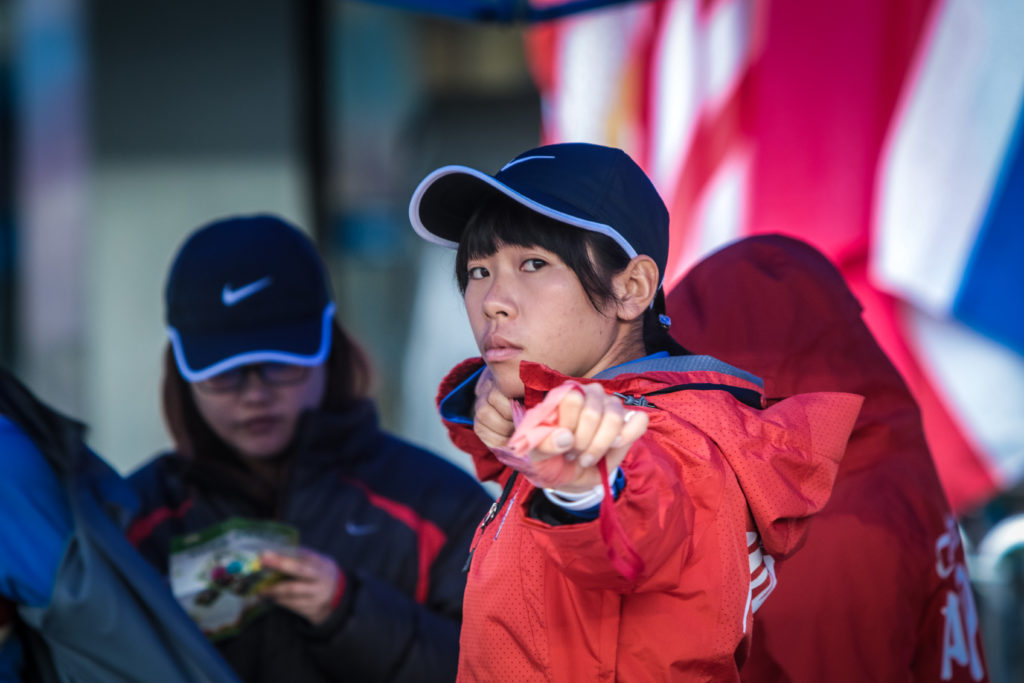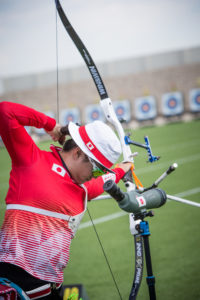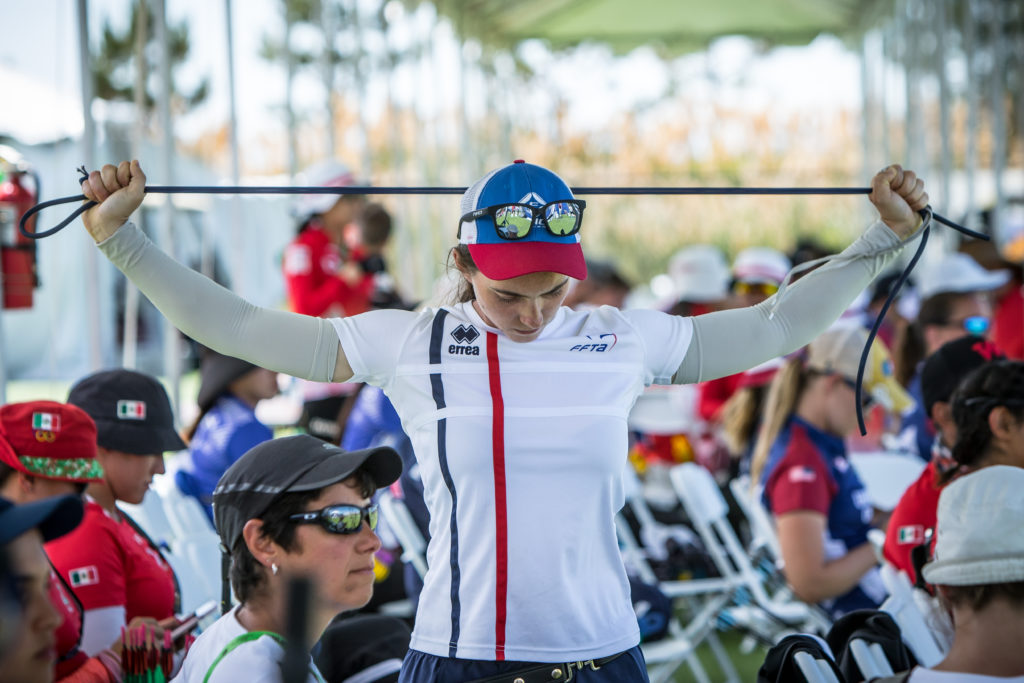Patrick Huston explains his approach to getting strong with the bow…
How would you feel if I told you I could give you a fabulous shortcut to putting more arrows in the middle? What if I told you you could be putting more arrows in the middle without even spending any more time training than you do already? What if I told you that there is a magic pill which will make almost every archer shoot higher scores? You’d bite my hand off to know about it, wouldn’t you?
Bow training is the answer to this. I can guarantee that 95% or more of the archery population is not actually fit to shoot their bow. This lack of bow fitness results in a lower standard of performance than they would otherwise be capable of. Just shooting a lower poundage does not get around the underlying flaw.
Being able to fully control your body whilst handling your bow, for a large number of shots and over extended period of time is a prerequisite for good performance in archery. This allows you to aim your bow in a steady fashion front he start of a tournament to the end. It will also allow you to execute on the clicker as you want to all the way through your shooting session.
Most importantly this allows you to maintain the structural form which you have worked so hard to create, learn and embed! I can personally attest to this: I shot my world record of 348 at 70m eight weeks after starting reversals. My best 720 before that was 661!
There are a few pieces of kit which I will explain how to use in this article. The number one piece of kit to perform these exercises comfortably is a Formaster or elbow sling. You can purchase one made either by Astra Archery, or a more basic one such as Quicks sell. You can also make one yourself out of a few basic materials.
You will also need a rigid strap, such as a dog lead, as well as your bow of course. There are a variety of other tools such as the AccuBow, and Bow Trainer. However I would recommend more basic kit, at least to begin with.
The elbow sling trainer is the most important piece of kit for anyone wanting to become properly fit for recurve archery (or indeed barebow or traditional). This simple piece of kit attaches round your drawing elbow and loops around your string. We can then draw the bow using just our elbow, taking our draw hand and arm entirely out of the equation.
This allows us to train without the tension most archers carry in their fingers and forearm, as well as not putting too much strain on the pads of the fingers. There is also the added benefit that the string being attached to the elbow gives us an extra bit of alignment which can actually help to improve alignment through the shoulders by doing these exercises.
The first exercise I will give you is the bread and butter of bow fitness: reversals. A reversal is simply drawing the bow back with the elbow sling attached to the string, using only the sling, not your fingers. This exercise can be done with your stabilisers on or off (try it both ways). Also do not worry about aiming or looking towards your sight pin.
Then we hold the bow at full draw for a period of time and then relax back to rest. We have a defined rest period and then back to full draw. This process repeats for the length of exercise we wish to do. The length of time you hold at full draw for depends entirely on the level of bow fitness which you start from.
Most people I would recommend to start at about 15 seconds at full draw and at least 20 seconds rest for about ten minutes. As you progress in strength these numbers will start to increase fairly quickly.
Once you reach 15 minutes without needing a break you should then increase your hold time to equal your rest. The goal standard you should aim for is 30 minutes at 30 seconds hold followed by 30 seconds rest with your competition bow weight.
This is the base level fitness that will allow you to sustain technique and stability through tournaments, wind and technical change. It is well worth the commitment. Do your utmost to retain your form and alignment throughout the exercise.
Reversals work builds underlying strength in your archery positions and muscles. This exercise alone can be a game changer for archers if done regularly!
This is actually a very small amount of training. The more you do in total, the more effect it will have on your muscles and your shooting! Reversals are the kind of thing you can easily add into your warm up at the beginning of a shooting session and as you put your bow down. Say ten minutes as part of your warm up and five minutes at the end.
You will soon see a difference. Try getting a shooting partner to join in and make it competitive. I took a club mate from 540s on a Portsmouth to 570 in a month simply by bow training for ten minutes at the start of every session. We didn’t even do any technical work, just some reversals.
If you are looking for ways to make these sessions more strenuous start adding expansion movements into them. Remember to train the front shoulder in movement as well as the rear shoulder. Only attempt this once doing 25 second holds, before this, just static is ample. I recommend five or six second expansion movements, repeated through the hold.
Alternate from front to rear shoulder and then both together. You will be amazed how much mobility and power you will develop in your shot! The next level up is to attempt to aim the bow during this expansion exercise. Doing this with stabilisers on will help to condition the front shoulder muscles, too.
Reversals just with the bow
The main exercise I will describe to be done with you bow is known as the ‘Seven Two’. Basically you come to full draw, hold for seven seconds, go down to three quarters of your draw for two seconds and then back to full draw for seven. You will find that this very quickly becomes difficult and you likely won’t get past four or five. At that point have a couple of minutes rest and then go again. This exercise really builds draw specific strength and fitness!
I love doing bow arm circles, you may even have seen me doing it as part of my warm up. Simply lift your bow, stabilisers and all out to the side and move it around in a circle. Try to do this small and fast so that your are constantly changing the direction of the bow, not just doing huge loops. Do your utmost to keep your upper body and hips still, don’t just wiggle your whole body around.
For advanced archers with good conditioning only, I recommend doing repeat draws. As a challenge, at the end of a session see how many draws you can do in a row. Anchoring precisely isn’t necessary, just bringing the bow back all the way to your draw length. I can do about 100 in total but it gets pretty sore!
Needless to say you need to be in good bow shape for this; this is not for beginners and take care to avoid injury. You can do this exercise for the front shoulder as well by coming to full draw and crunching it up and back and then forward and down as many times as you can. Trust me, you will feel a burn.
Even if you shoot once a week, 30 minutes sat in front of the TV with your elbow sling on will make night and difference to your archery. As my coach Richard Priestman says: ‘If you’ve got three hours to train, shoot for two hours and bow train for an hour. If you’ve got two hours to train, shoot for an hour and bow train for an hour. And if you have one hour to train, bow train for an hour!’






Patrick Huston. An interesting and informative article, but can you explain what is meant by expansion movements.
Regards, Brian Clarke